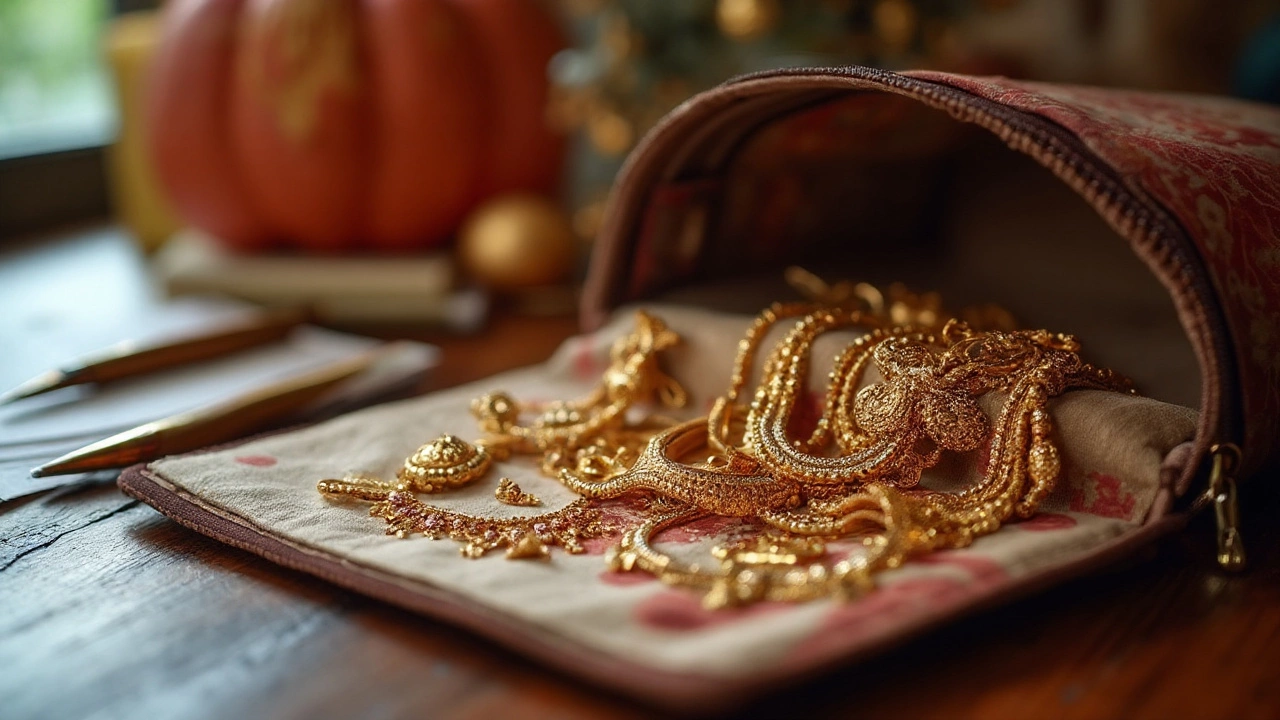You know that small jolt of panic right before landing, when the cabin crew reminds everyone to fill out the customs declaration card? Suddenly, you start wondering if the watch on your wrist or that wedding band counts as something you need to declare. That’s not just you. Loads of travelers second-guess what’s considered ‘personal items’ or ‘valuable goods’ — especially when it comes to jewelry. The rules can sound confusing, and nobody wants a nasty surprise, like a fine or delayed bags, after a long haul flight. So, what’s really the law when it comes to declaring personal jewelry at customs? The truth might be less dramatic than you think, but there are a few catches.
How Customs Views Personal Jewelry Across Borders
It turns out, most people don’t realize personal jewelry has its own rules at customs — and it’s not always spelled out in those little pamphlets or on the forms. Personal jewelry, like your engagement ring, a simple chain, religious pendants, or the earrings you wear regularly, is usually classed as ‘personal effects.’ Customs officers generally don’t care about your everyday pieces if they clearly belong to you and have visible signs of regular use (scuffed backs, slightly bent ring bands, you know the drill). But travel with bags of bling, receipts from last week’s shopping spree, or high-value items, and you might raise some eyebrows.
Different countries interpret customs declaration laws slightly differently; there’s no universal answer. For example, in New Zealand (where I call home), if you’re just passing through with your own jewelry, you don’t have to declare it unless you plan to sell, gift, or leave it behind. The NZ Customs Service is pretty explicit: travelers are allowed to bring in personal effects, including jewelry, without paying duty or declaring them. But if you’ve just bought your jewelry overseas (say, a flashy gold bracelet from Dubai) and it exceeds the country’s duty-free limit, you’re expected to declare it when returning.
In the United States, officials state that travelers should declare any item acquired abroad, including jewelry, regardless of whether it’s for personal use or a gift. However, there’s also a reasonable allowance: customs agents are trained to spot pieces obviously worn and owned versus boxes of new, tagged jewelry. If you’re traveling to places like India, the rules get stricter. India allows women to bring in up to 20 grams of gold jewelry duty-free and men up to 40 grams (subject to value limits), but if you’re over that, you’re required to declare and possibly pay duty.
So, what’s the best approach? If your jewelry is sentimental and not fresh out of the store, you rarely need to stress. But if you’re carrying a high-value piece, or multiple new items, play it safe: keep receipts handy and declare it. Showing you have nothing to hide goes a long way with customs. If in doubt, ask the officer directly when arriving — they’ve seen it all before.

What Triggers Concerns (And How to Be Prepared)
Ever meet someone at baggage claim who had all their stuff spread out in front of customs agents? Nine times out of ten, it’s because something about their declaration didn’t add up, or they looked suspiciously well-accessorized. Customs folks are trained to notice if your bling doesn’t match your story. For example, if you’re wearing a diamond necklace worth more than most cars, and you’re breezing through the green lane, they might ask a few questions.
Here’s what helps: before setting off, make a list of the high-value jewelry you’re bringing. Take photos of your items on your phone. Send yourself an email with purchase receipts or insurance appraisals (if you have them). If you bought something expensive recently and plan to wear it overseas, bring the receipt to show you bought it at home, not abroad. In some countries, like the US and Canada, you can register valuables with customs before leaving by filling out a Certificate of Registration (Form 4457 in the States). This proves the stuff was yours all along and isn’t a sneaky new import on the way back.
Sometimes, it’s not about the jewelry’s value, but the quantity. Planeloads of people try to bring gold or luxury watches into certain countries every day to resell or gift (which, for customs, is a big red flag). Buying in the airport’s tax-free store on your way out? Those items might still count against your duty-free limits on the way back. Don’t forget, customs agents worldwide can ask to inspect your bags randomly, so make sure everything adds up. And whatever you do, don’t try to fib — nothing gets you in trouble faster than lying to a customs officer.
One more tip: wearing the jewelry instead of packing it is smart, but don’t overdo it. If you look like you’re headed to a red carpet, that can be suspicious. Stay low-key, pack your fancier items deep in your carry-on (with padding), and avoid putting anything valuable in checked luggage. Lost bags are bad enough — losing a family heirloom is on another level.

Protecting Your Jewelry On The Go
Now for the part travelers overlook until it’s too late: keeping your jewelry safe while you’re hopping around the world. The risks aren’t just about customs — think theft, misplacement, or damage. When you pass through security, keep your jewelry on if you can (it usually doesn’t set off alarms unless it’s huge or loaded with metal). When you must remove pieces (like for X-ray trays), use a discreet pouch or a travel jewelry box, not a flimsy baggie. And always keep these in your sight.
If you don’t plan ahead, you’re only making things harder on yourself. Cheap costume pieces might be fine tossed in with your socks, but anything sentimental or pricey deserves better. Use a dedicated pouch, tuck a note with your contact details inside, and consider insuring high-value pieces. Plenty of travel insurance plans offer specialty coverage for jewelry — just double-check the policy limits. Basic plans cap jewelry claims around $500-$1,500, so if you’re carrying something more expensive, you may need extra coverage.
Here’s a fun fact: the world’s lost and found departments (especially in airports) report hundreds of cases each year of single earrings turning up, but almost nobody claims them. If it matters to you, give it some attention. When staying in hotels, don’t trust that cute safe in your room for everything — hotel management often has access. For seriously precious items, consider a secure pouch stashed in your bag, or ask the front desk about secure, manager-only storage. If you’re hitting the beach, don’t leave rings in your shoes or on a towel while swimming; buy a cheap, waterproof pouch or locker rental instead.
Finally, if you’re crossing borders with high-value jewelry, know this quote from U.S. Customs and Border Protection sums it up best:
"If you can’t prove you owned it before you traveled, you may have to pay duty on it when you return—even if it’s your wedding ring."It all comes down to proving ownership and being honest. If you’re organized, up-front with customs, and keep your precious stuff safely stored, you’ll cruise through with no trouble and get to enjoy your travels — and your jewelry — stress-free.
